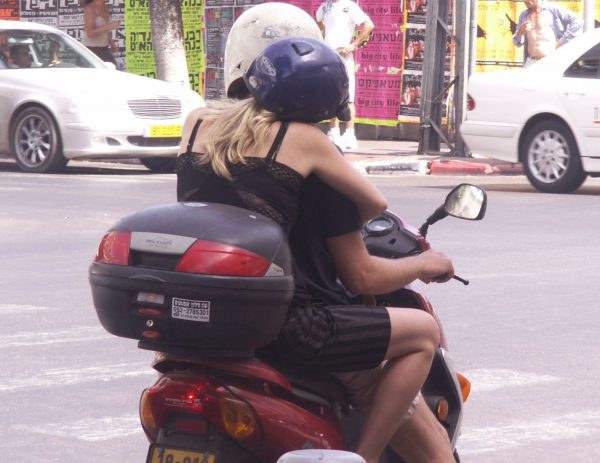Unfortunately we didn’t evolve a nice, hard exoskeleton to protect us against abrasive tarmac, and that’s why it’s important to wear protective gear when you’re riding your bike. Tarmac vs skin is a fight stacked in tarmac’s favour. Yet in summer it’s the time when you want to get out on the bike and feel the cooling breeze on your skin. This is why we frequently see riders in shorts and flipflops taking their chances.
The first tip is not to search Google for what happens when skin meets tarmac at high speed; it’s not pretty. This is why sensible bikers wear proper motorbike safety gear to avoid common injuries in riding motorbikes. Full protective gear includes gloves, shred-resistant trousers and jacket, a good helmet, a spine protector and boots with shin protection.
Fortunately it doesn’t get stupidly hot in the UK like it can on the continent – 25 degrees doesn’t feel too bad when you’ve experienced riding around Rome in July – but it can still feel a little uncomfortable. While you’re riding it’s not so bad because the airflow will keep you cool, but once you stop (and especially if you’re on a naked bike which radiates its heat directly at you) you can start to feel it. There are hot weather riding solutions, though.
Hot weather motorbike clothing
If you ride your motorbike throughout the year, e.g. as a commuter, you’ve most likely already invested in clothing and equipment for riding your bike in the rain. For riding in hot weather, the same concept applies: get the right protective clothing that won’t compromise your safety.
Summer motorbike clothing is lighter than winter clothing and will have more vents you can open up to take advantage of the breeze. The textiles will be more breathable and there’s a chance it will be slightly cheaper because there’ll be less material cost in a lighter garment.
If you don’t already have any equipment, it is possible to just buy summer gear and wear layers underneath it in winter. Check out what your local bike shop recommends, and talk to other riders.
If you’ve travelled in Asia you’ll undoubtedly have seem riders like this guy with no helmet and balancing a heavy gas cylinder with his Crocs. Don’t be this guy.

Also, don’t be these two. Both the rider and pillion on this scooter in Tel Aviv have chosen to risk some serious injuries, even if they come off the bike at low speed.

“I’ll love you even when your arms and legs are irreparably scarred”
Let’s look at the main things you need to consider when riding your bike in hot weather.
Sweating and cooling
The cheap option is to soak your t-shirt in cold water then put your jacket on over the top. As the water in the t-shirt evaporates it will keep you cool and will stop you from sweating as much, reducing your risk of dehydration.
The alternative is to buy a proper cooling vest which you can fill with water. These also work by evaporation.
Suntan lotion
In winter you’ll probably end up covering every part of your exposed skin to keep warm, but in summer you’re more likely to have some areas you don’t cover as well – usually your neck and wrists. These can get quite badly sunburned.
Ventilation
If you have dedicated vents (often under the arms) open these. If you have no vents, open your pockets (but mind you don’t lose anything. Riding in the UK, you won’t have a problem with convection-based cooling, which works when the wind hits you and removes your heat. This is only possible up to around 34 Celsius. If you’re riding on the continent, though, the advice is different: you want to wear wind-deflecting materials with breathable fabrics underneath.
Take breaks in the shade
It’s more exhausting riding a bike when it’s really hot. Remember to stop, rehydrate and take your gear off while you wait…well, not all your gear.
You’ll need to drink at least every hour. If you feel thirsty you’re already a bit dehydrated. If your urine is anything darker than very pale yellow, then you’re dehydrated. Dehydration can affect your reaction times and decision-making ability. It’s best to drink body temperature water because drinking ice cold water forces your body to work hard to try to heat it up and this can make you hotter.
Other symptoms of dehydration include headaches, dizziness, cramps and blurry vision. If they’re bad they can signify heatstroke. You’ll need to stop for at least half an hour and get some liquid and food (to replace electrolytes lost), and give your body enough time to assimilate them.
Avoid the heat on your bike
Heat on your bike is dissipated by the wind. Look well ahead so that you can anticipate traffic flow (especially traffic lights) so that you’re not sitting waiting at a red light. This can be particularly uncomfortable on a naked bike without any fairings to deflect the heat away from you. Remember that you can filter through traffic, or you can choose a longer route with better traffic flow.
